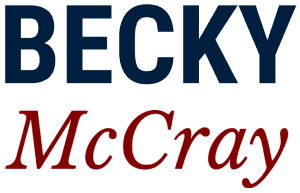Who do you picture as rural people?
When you picture rural people, what comes to mind?
While the common view of the rural US is basically older white people, the demographics are shifting. Racial and ethnic diversity are increasing in rural America.
“Racial and ethnic minorities made up 21 percent of rural residents in 2014….Overall rural population loss (which was -0.2 percent for the period) would have been much higher if not for the growth in the rural racial and ethnic minority groups. Rural minorities tend to be younger on average and have larger families than non-Hispanic Whites,” USDA ERS reported.
We don’t talk much about the diversity of people moving to rural areas. We also don’t talk much about the diverse people who have lived in small towns and rural places for a long time, for generations. Sometimes diverse groups of rural people get along well, and sometimes not so well, and sometimes there is outright hostility.
It takes deliberate work to build community across racial and ethnic divides.
Reader Girault Jones wrote in to ask for your thoughts on this. It’s such an important question, I asked him for permission to share it with you, too.
“Becky: I have enjoyed your emails very much and I think that most of your suggestions are worthwhile. I want to see if you have any opinions about our problem here in Grenada, MS. We have several committees which have been formed to try and save our downtown area – which has fallen to the same fate as most small towns. All of the stores have moved out to the highway and have left our ‘square’ to the lawyers who use the courthouse and City Hall. But our largest obstacle is a social one in that half of our community is African-American and half is caucasian which produces divided interest when any project is proposed. It is practically impossible to come up with any community event which is received enthusiastically by both halves of the community. Any suggestions?”
Thanks, Girault Jones
Here are the ideas I suggested to Girault:
1. Listen to people who already connect across both groups. Most of us are usually well connected with people like ourselves, but there are also a few people who form bridges and connect across different groups. Because they already have personal relationships in place, they will be good people to ask for insight and ideas.
2. Look for examples of any kind where people of both groups work together right now. It can be school, arts, sports, ministerial alliance, or anything. Listen to the people involved in these existing groups. Try to learn how they are making it work.
3. Create more times when diverse people can sit down and just talk together. No agenda. Just meals and conversations. This doesn’t happen naturally. You have to create it. It’s part of building community. Add conversation opportunities into existing events and mix people up. Put easy starter questions on the tables at a festival to get people talking to each other. Appoint some ambassadors to walk around and start friendly conversations.
We really don’t understand each other very well, in my experience. So friendly, basic, human conversation is an important starting point.
Making progress won’t be quick, and it won’t be a pretty, perfect process. Anything about human community will be messy and imperfect.
Girault asked me his question back in December, so I asked him for an update. He says they are making slow progress, and that the divisions aren’t the major issue. They have people willing to invest, but they have a lot of work to do. Thanks, Girault, for letting me share your email and kick off an important conversation.
You have some experience with bringing people together across divides, What has worked for you? Please, hit reply and tell me about it.
Keep shaping the future of your town,
Becky
PS – How many empty lots or burned out buildings do you have in your downtown? Our Filling the Gaps webinar will cover productive ways to use them. It’s only US$20.
